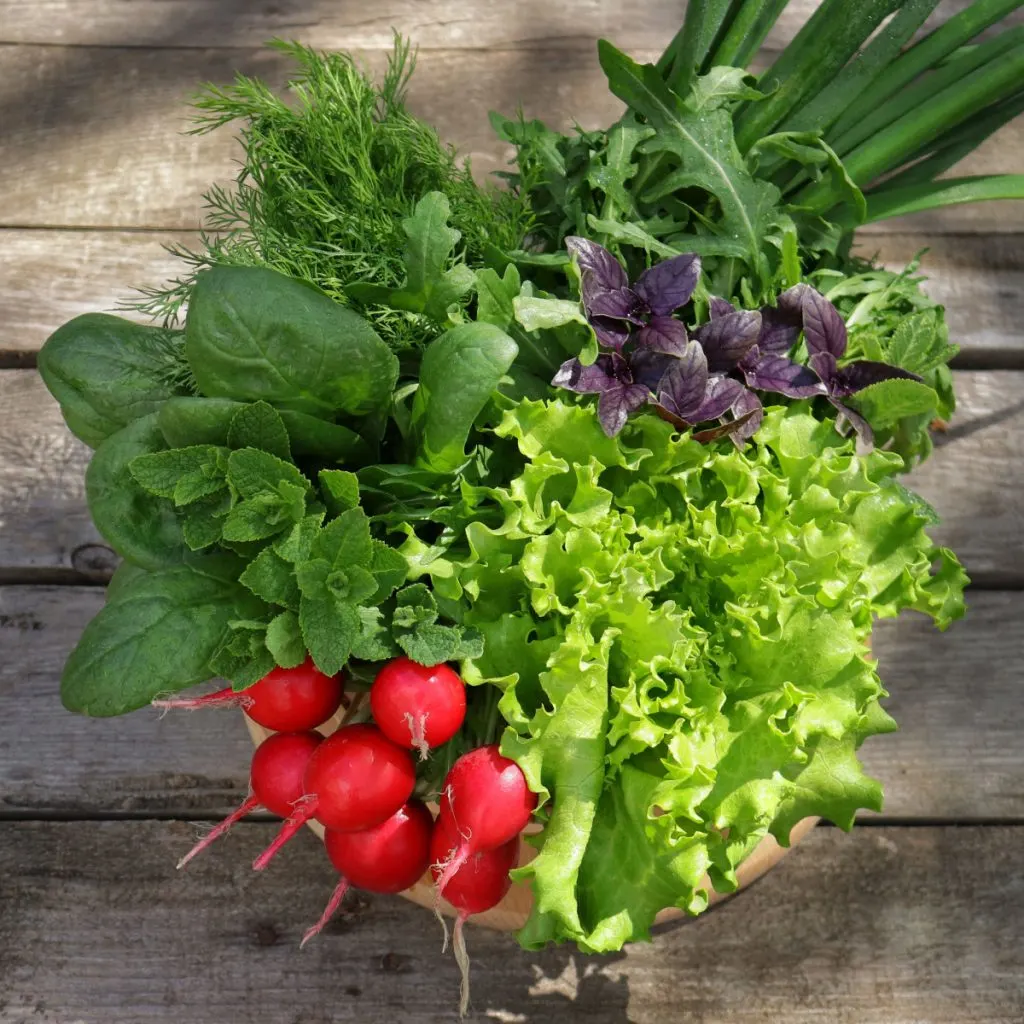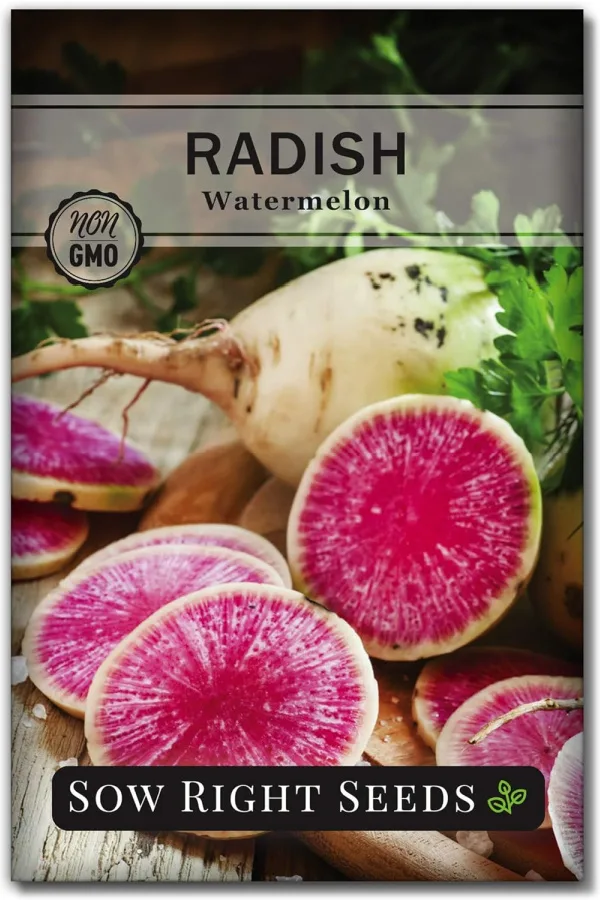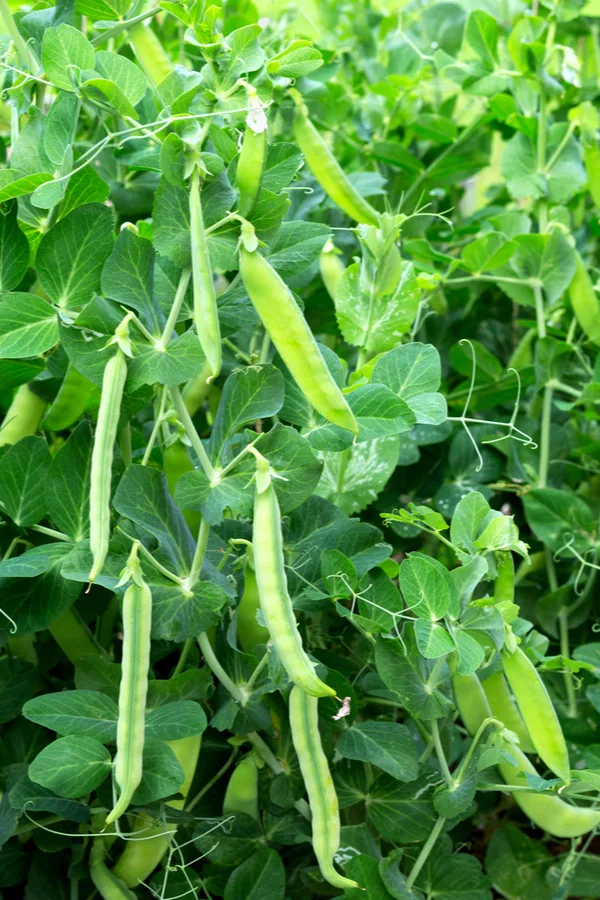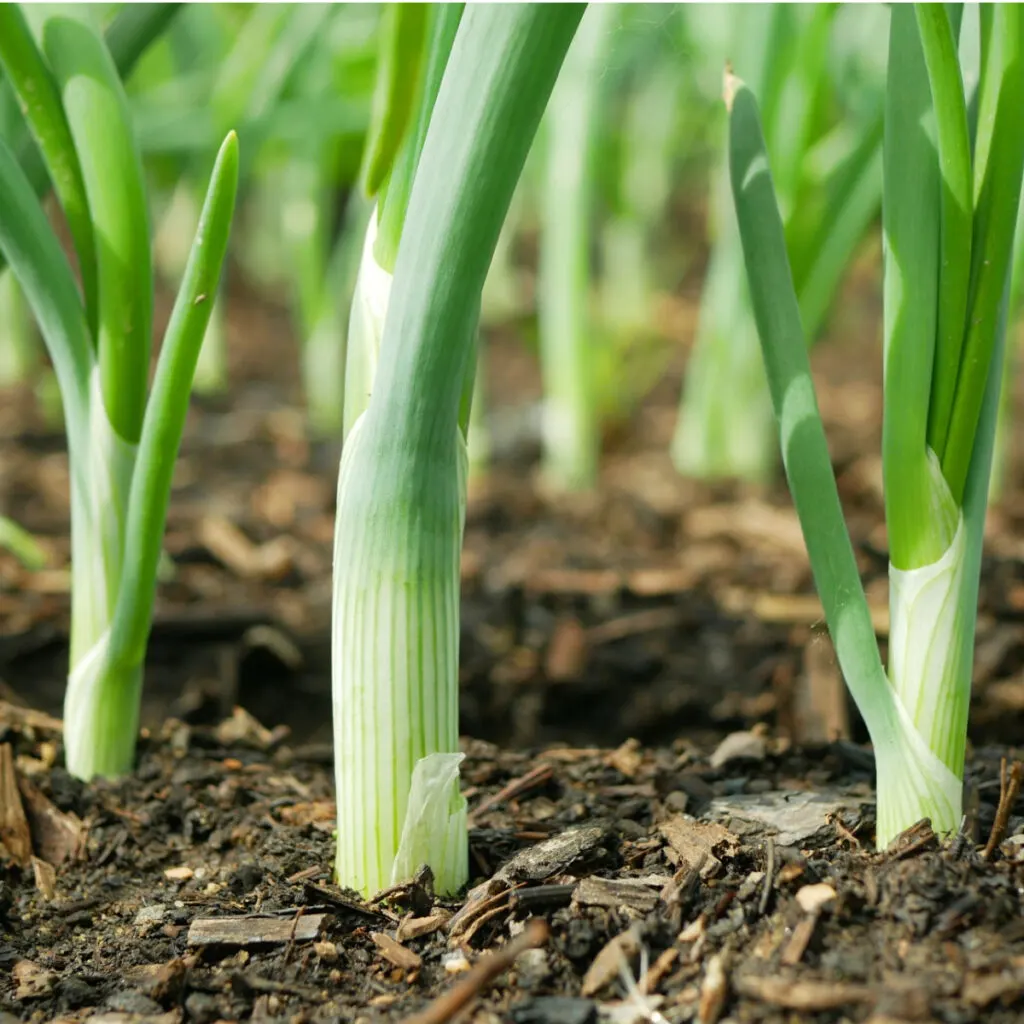If you are anxious to get growing this year and start your garden season sooner rather than later – it’s time to plant a few vegetables crops from seed that not only handle the cool spring weather, but actually thrive in it!
When it comes to getting a jump on gardening, there are actually quite a few vegetables that you can start from seed that grow beautifully in the cooler temperatures of early spring. And even better, they grow fast. In fact, some can go from seed to table in as little as three weeks.
Here is a look at 5 seed crops you can start planting before your last frost – along with some great tips and tricks for early planting to get your garden season underway now!

5 Seed Crops To Plant Early – How To Get Growing In Early Spring!
Spinach
Whether using fresh in salads, or cooking lightly to perfection, spinach is a power crop of healthy goodness. And even better, you can get all of that goodness growing quite early in the season. In fact, spinach seeds can be sown directly into the soil about 2 weeks before your last frost date.
To plant, create a small trench about 1/2 inch deep in the soil and one inch wide. Place in about 1/4 inch of compost in the trench. This will help hold moisture to the seed for good germination and early growth.
Plant seeds 1/4″ to 1/2″ deep every few inches lightly tamping into the compost. Cover the seeds with soil and water in lightly. As they mature – you can thin to about 3″ between each plant. Thinning at this point will give you some tasty baby spinach as a little treat! Affiliate Link: Early No. 7 Spinach Seeds – 100 Seeds Non-GMO
Radishes – 5 Seed Crops To Plant Early
Radishes are one of the easiest of all vegetables to grow. And they come in almost every shape, size and flavor. You can plant radishes in the soil as soon as the soil reaches 40°(F). They will mature fast and are an early producer. Some varieties can go from seed to harvest in as little as 28 days.

To plant, create a 1/2 inch trench and fill with 1/4″ compost. Again, the compost will help the seed to germinate and also give the root crop good energy for fast growth. Cover the seeds with soil and water in lightly.
Radish seeds are small so it can be tough to get spacing perfect. Try to plant seeds every 1 inch. Thin after seeds sprout to allow for the appropriate growth of your variety. This is usually thinning to every few inches. Affiliate Link: Sow Right Seeds – Watermelon Radish Seed for Planting
Radishes like consistent moisture, so keep them well watered if spring rains are sparse. Radishes are a great plant to succession plant. You can sow new seeds every 2 weeks to keep your family in fresh radishes all the way through late fall! (For tips on how to use those tasty radishes once it’s harvest time, be sure to check out: How To Store Radishes So They Stay Crisp – And 5 Ways To Use Them)
Sugar Snap Peas – 5 Seed Crops To Plant Early
When it comes to our favorite spring crop of all here on the farm, sugar snap peas rule. They are so delicious to pick and eat straight from the plant, it’s hard for us to ever have them even make it into the house!
Sugar snap seeds can go in the ground as soon as the soil can be worked, which for us in Ohio is usually mid-March. There is little worry of frost harming these cool weather loving plants.
To plant, create a trench about 1 inch deep and fill 3/4 full of compost. Sow seeds every few inches 1/2″ to 3/4″, lightly tamping into the compost. Finish by covering with soil, water in, and wait for the magic to happen!
For most varieties, you will need to provide support in the form of a trellis or wire fence to keep them off the ground. If you prefer not to trellis – there are some great bush varieties that will not need support. Affiliate Link: Sugar Ann Sugar Snap Pea Bush Variety Heirloom Seeds
You can succession plant sugar snap peas quite easily, plating every few weeks. They will usually bolt when hot weather arrives, but you can plant again in early fall for a late harvest.
Spring Onions – 5 Seed Crops To Plant Early
Spring onions are a fantastic addition to a garden – and are simple to grow in raised beds or containers as well. They can be grown from small bulbs or seeds and can be planted a few weeks before your last usual frost date without worry. Affiliate Link: Gardeners Basics, Green Onion Seeds for Planting
Spring onions grown from seed are a great multi-purpose garden crop. You can harvest them earlier in the year if you like the tender, small bulbs found on relish plates. Or, you can leave them in the ground till fall to harvest a mid-sized onion bulb that’s perfect for soups and roasts.
To plant, create a small trench about 3/4 inch deep and one inch wide in the soil. Place in a 1/2 inch layer of compost in the trench. Plant seeds 1/4 inch apart pressing lightly into the compost and then cover with soil and water in. Thin seedlings to about 3/4″ inch for harvesting green onions and about 2″ apart for larger fall harvest bulbs.
Lettuce – 5 Seed Crops To Plant Early
Spring is the perfect time to start growing great tasting lettuce in all shapes, colors and sizes. Lettuce germinates quickly, and many varieties can be harvested multiple times. It’s certainly a great way to keep fresh salads on the dinner table every night.
Lettuce grows best in rich, loose and fertile soil. Sow seeds directly into the soil about 1/4″ deep and an inch or so apart. You can simply mix compost into the surrounding soil for lettuce and then make small 1/4 inch trenches to plant. Affiliate Link: Baby Leaf Lettuce Seeds Colorful Spring Mix
We actually prefer the plants close to each other creating a full salad bed that not only produces heavily, but helps cramp out weeds too. For that, we sow our rows about 2 inches apart and plant the seeds 1 inch apart. If we need to thin, it gives us some great fresh baby lettuce.
Quick Tips For Planting Early Spring Crops
As with most vegetables, success all starts with good soil. Seed crops perform best in loose, fertile, and well-draining soil. Before planting, add in generous amounts of compost to your soil. It not only provides nutrients for the seeds as they grow, it helps to retain moisture and keep the soil loose for easy sprouting.
Thinning
The name of the game when planting seeds is to over seed and then thin. Over seeding ensures you have plenty of seeds that will germinate into adult crops.
Although it’s tempting to let all of the seeds that sprout grow, thinning is extremely important. By reducing the additional starts, it allows the remaining plants enough space to grow to full size. Don’t think of it as killing plants. Think of it as saving your entire crop!

Succession Planting
Finally, remember with seed crops to spread planting times out. This is important to keep everything from maturing at once. We plant a new set of seeds every few weeks in our garden and raised beds just for this purpose.
It allows for a smaller, more manageable harvest that comes on slow and steady. Planting your entire crop at once can quickly lead to vegetable overload and the inability to process or use it before it goes bad. Once mid-summer rolls around, be sure to read: How To Replant Your Garden This Summer With Seeds – Set The Stage For A Big Fall Harvest!
Here is to getting your garden growing earlier than ever this year with a few spring seed crops! Happy Gardening – Jim and Mary.
Old World Garden
Jim and Mary Competti have been writing gardening, DIY and recipe articles and books for over 15 years from their 46 acre Ohio farm. The two are frequent speakers on all things gardening and love to travel in their spare time.
As always, feel free to email us at thefarm@owgarden.com with comments, questions, or to simply say hello! You can sign up for our free email list in the subscribe now box in the middle of this article. Follow us on Facebook here : OWG Facebook. This article may contain affiliate links.



